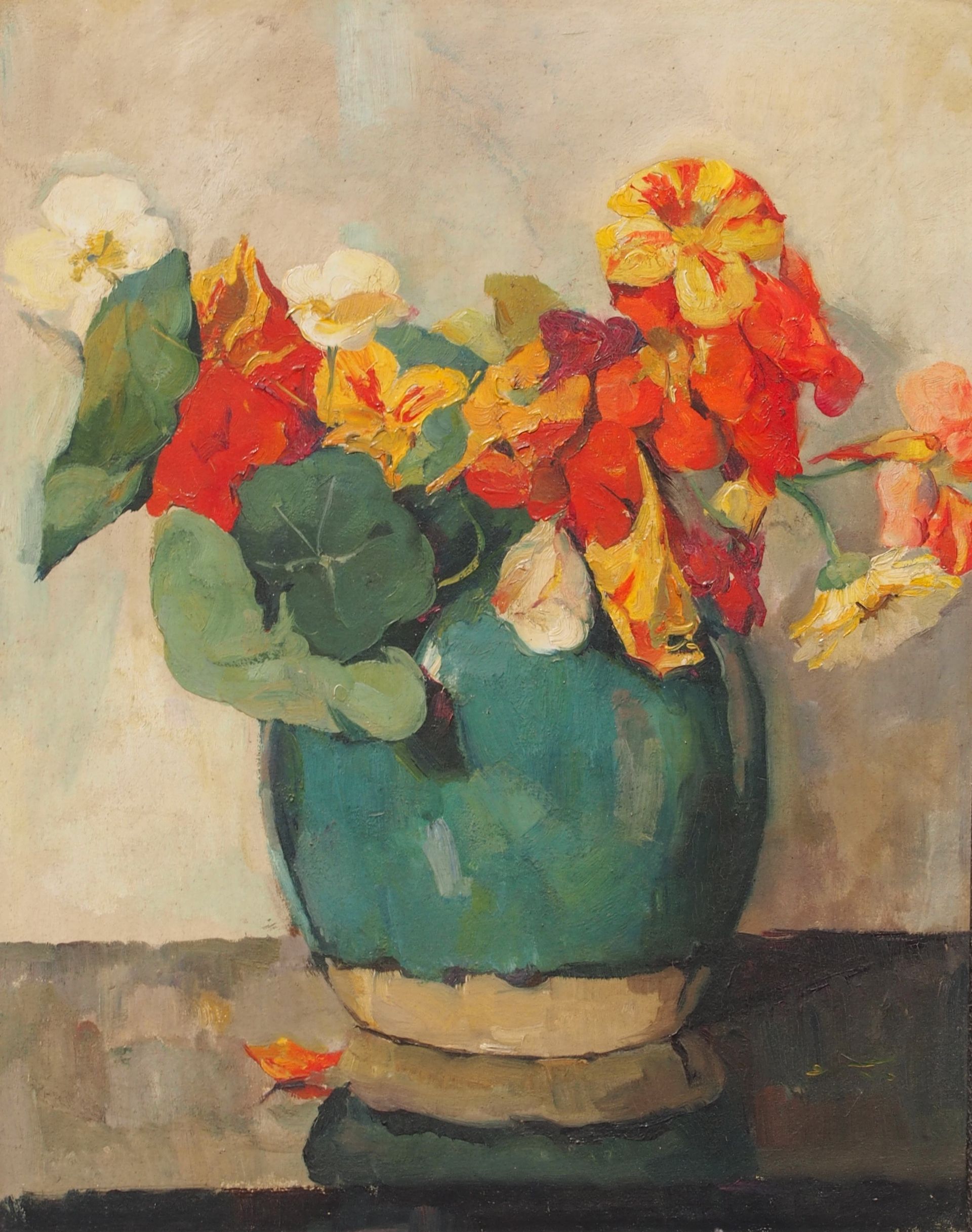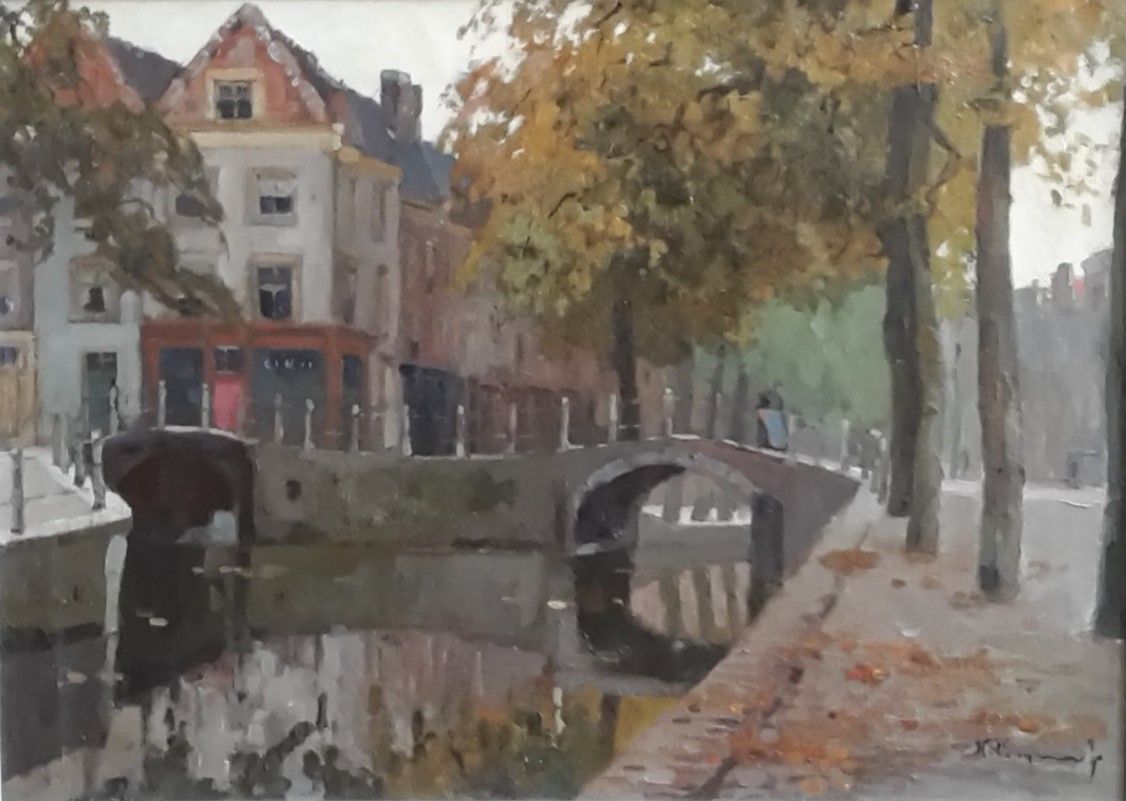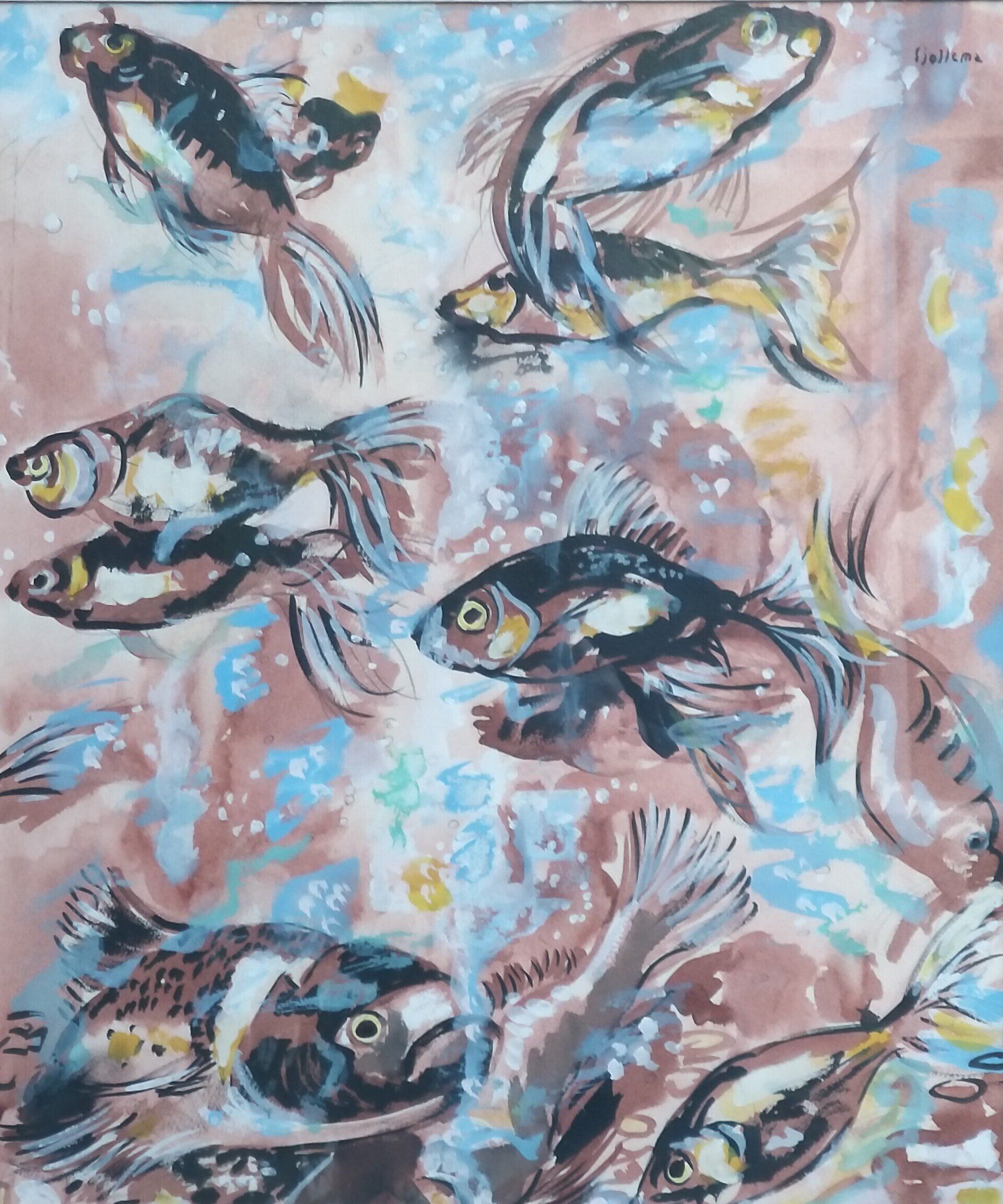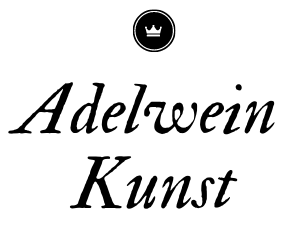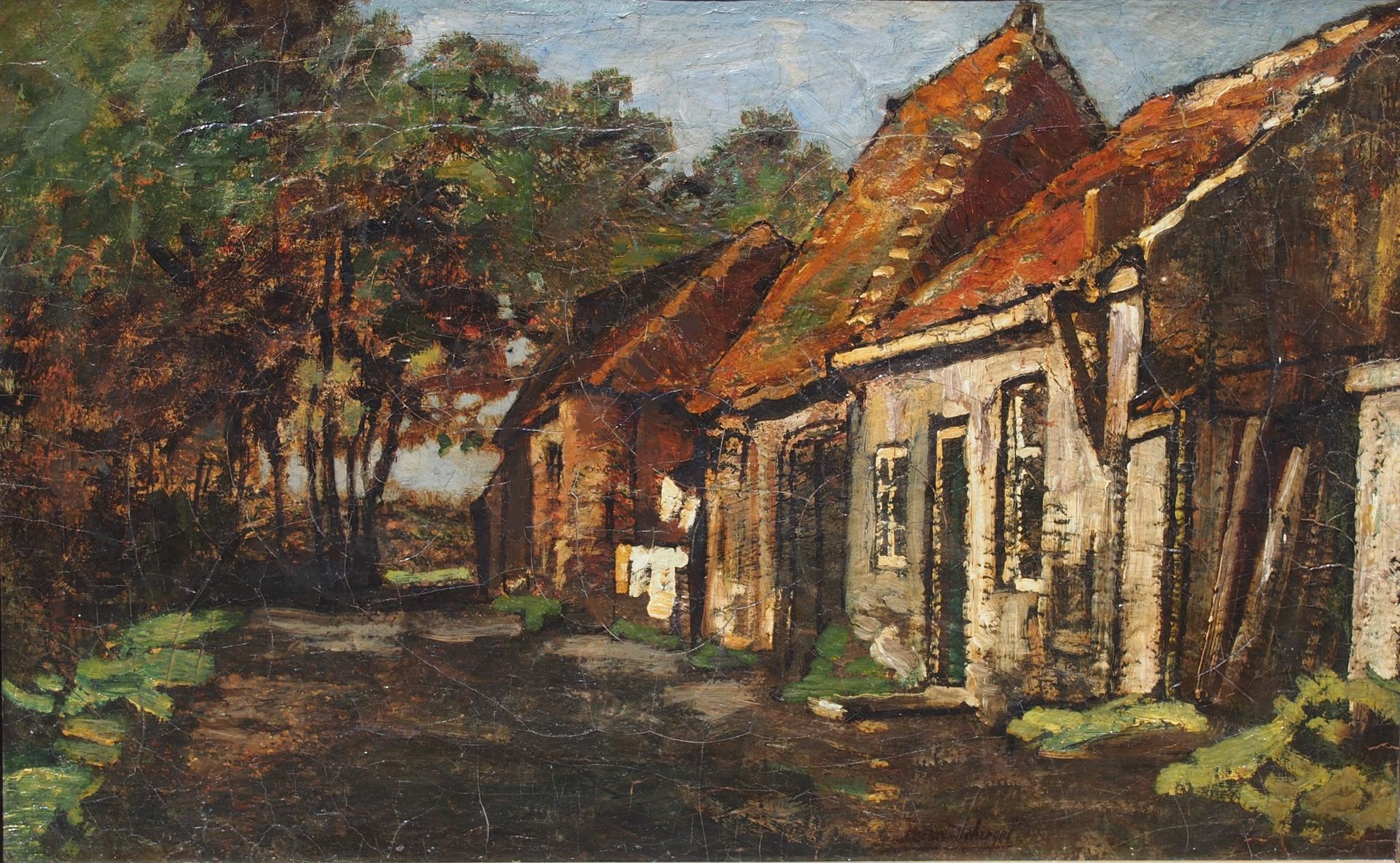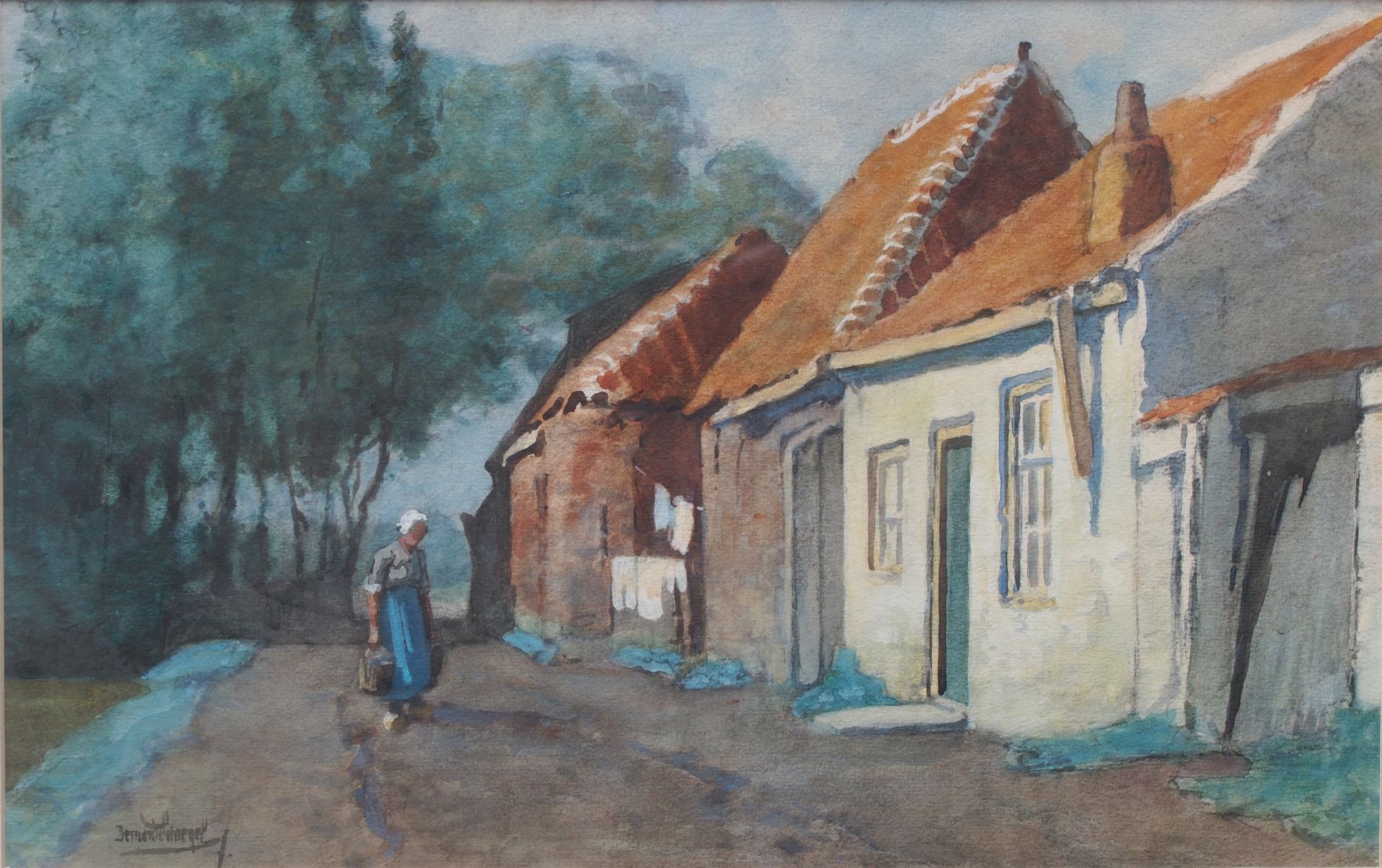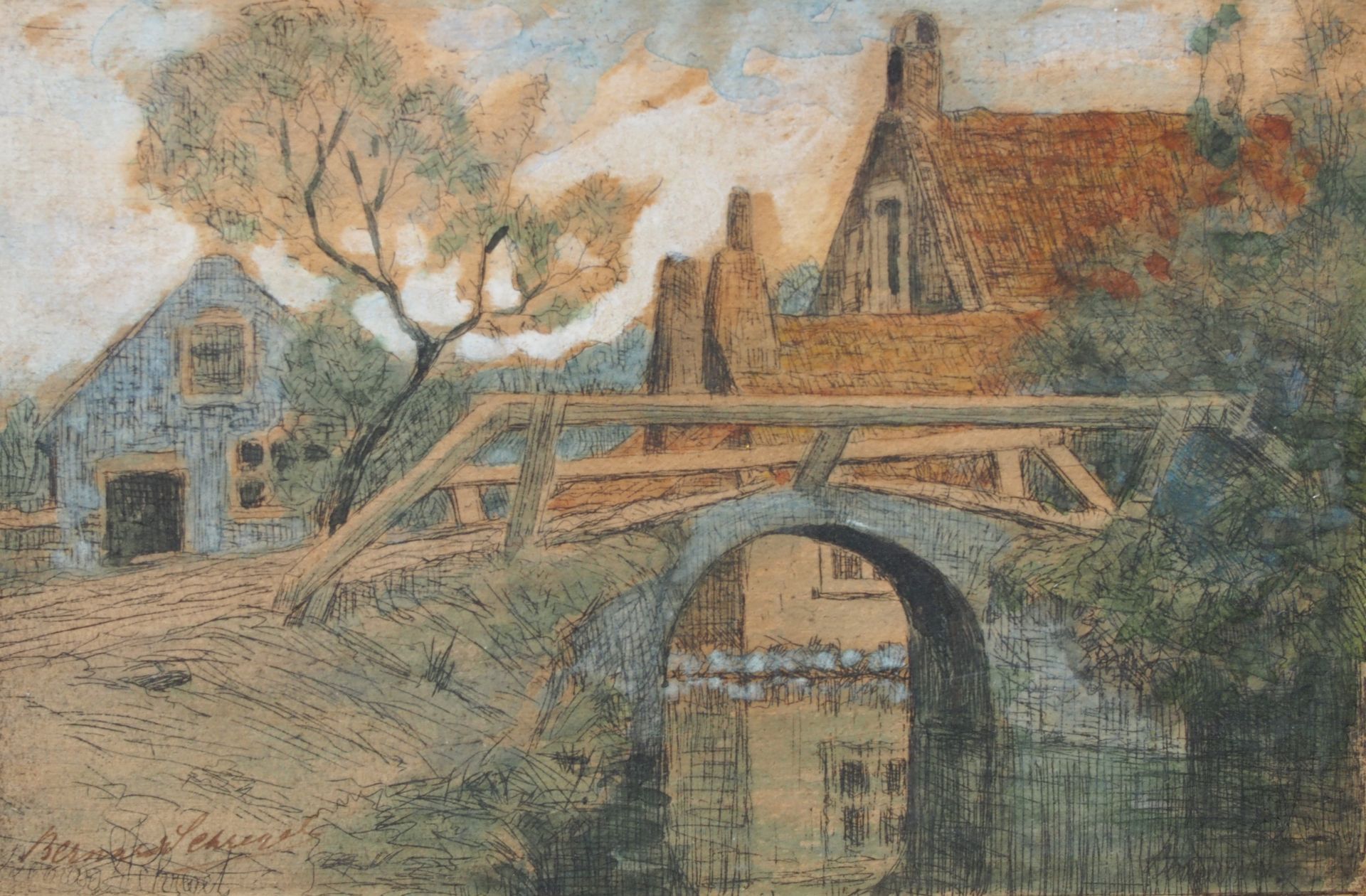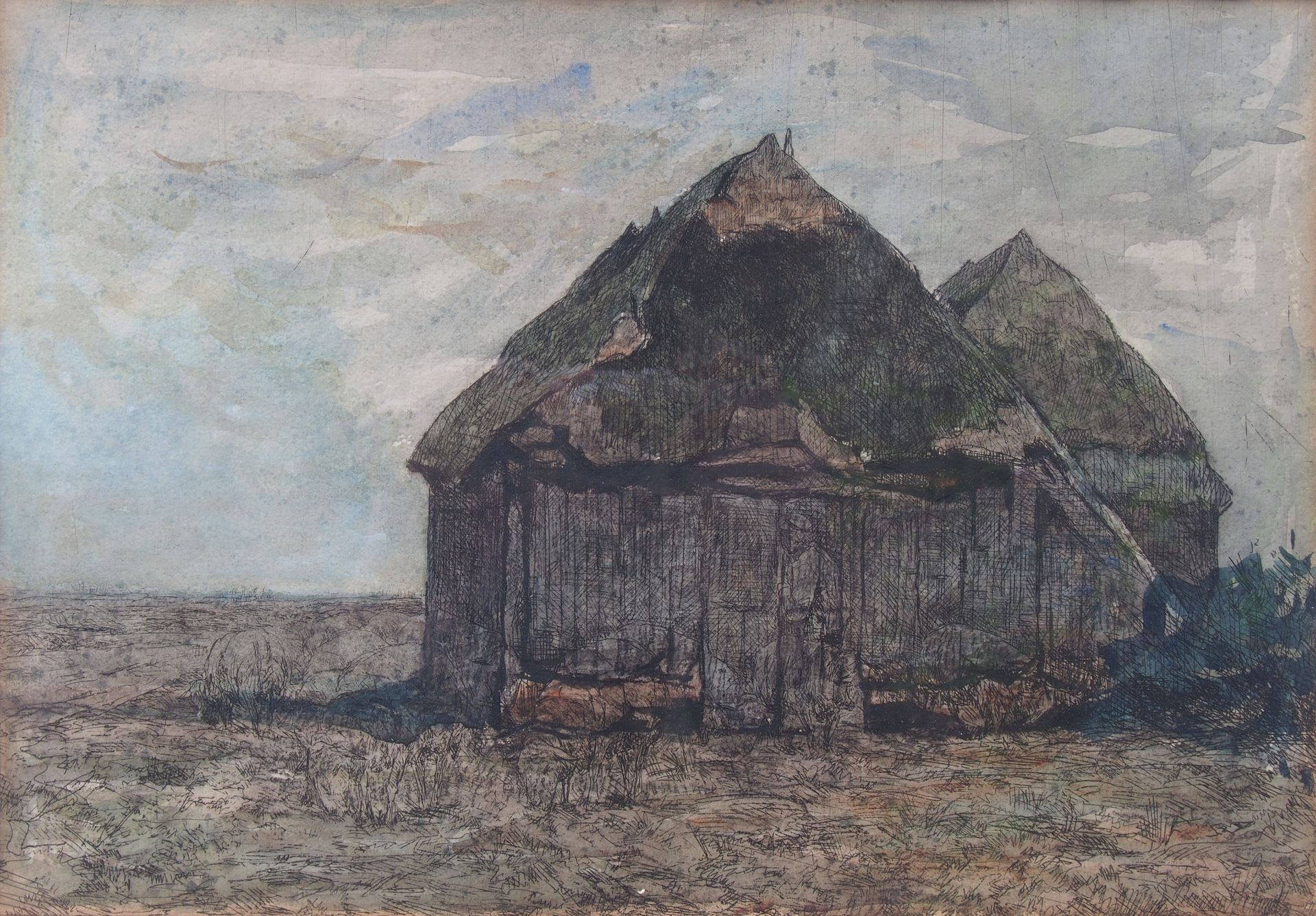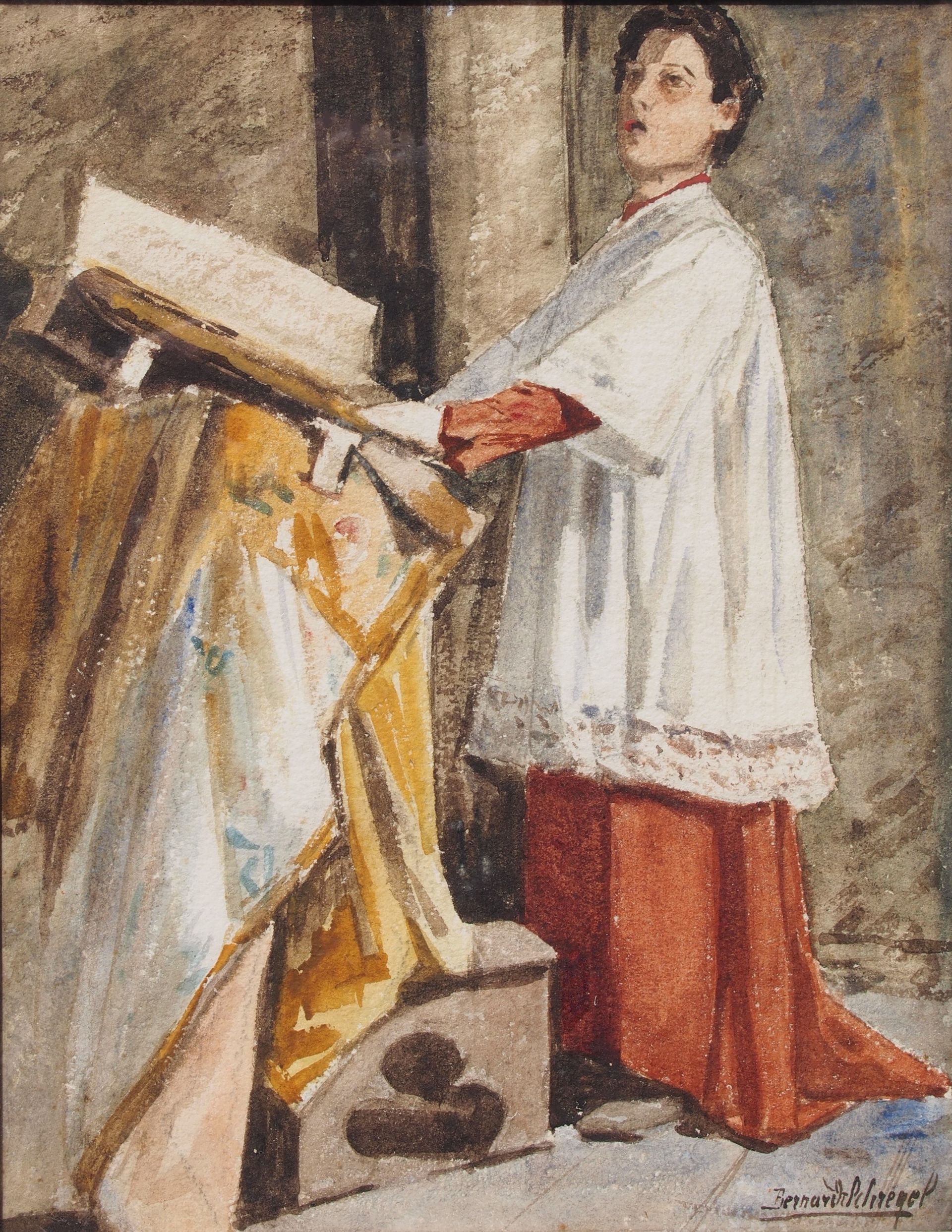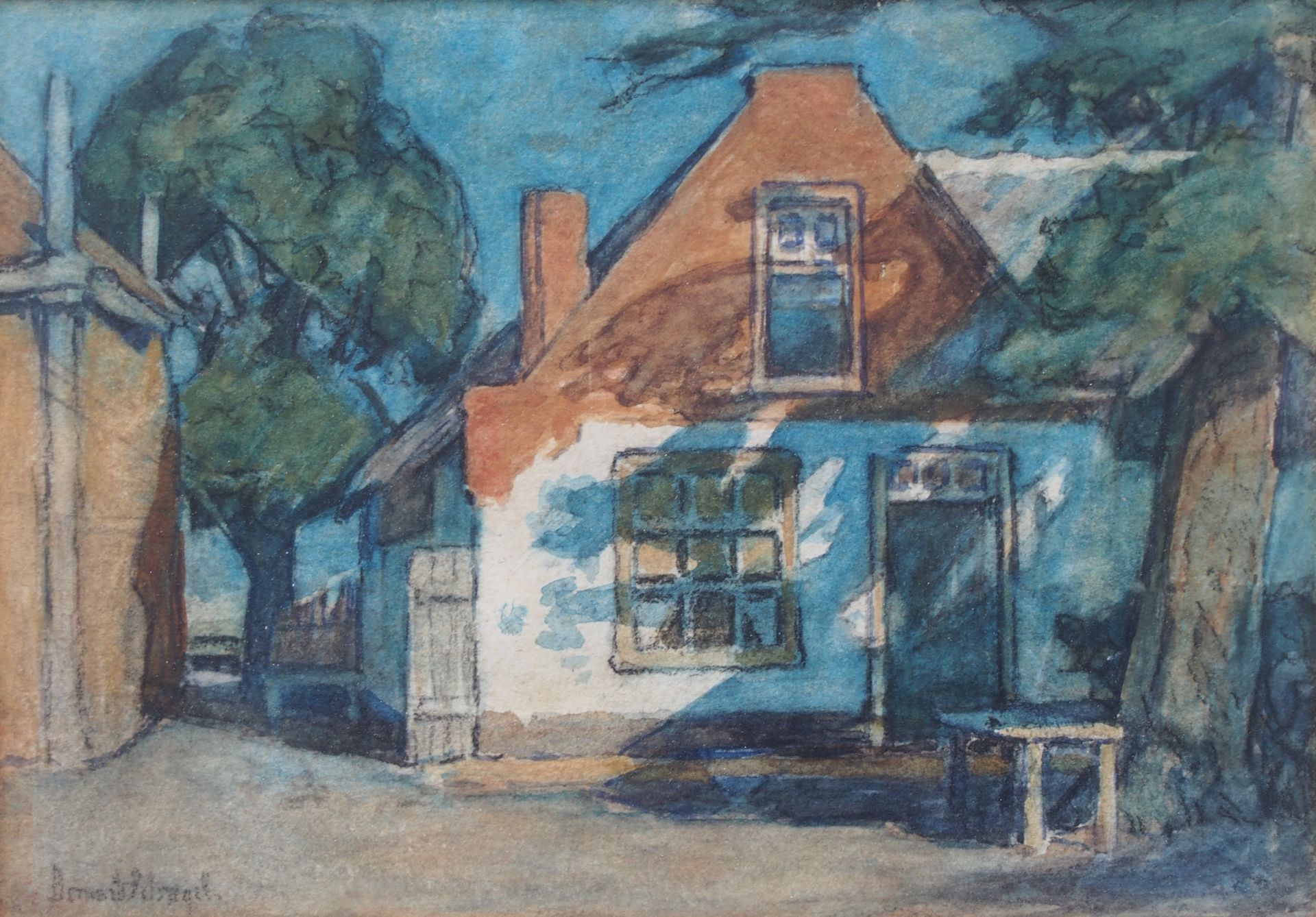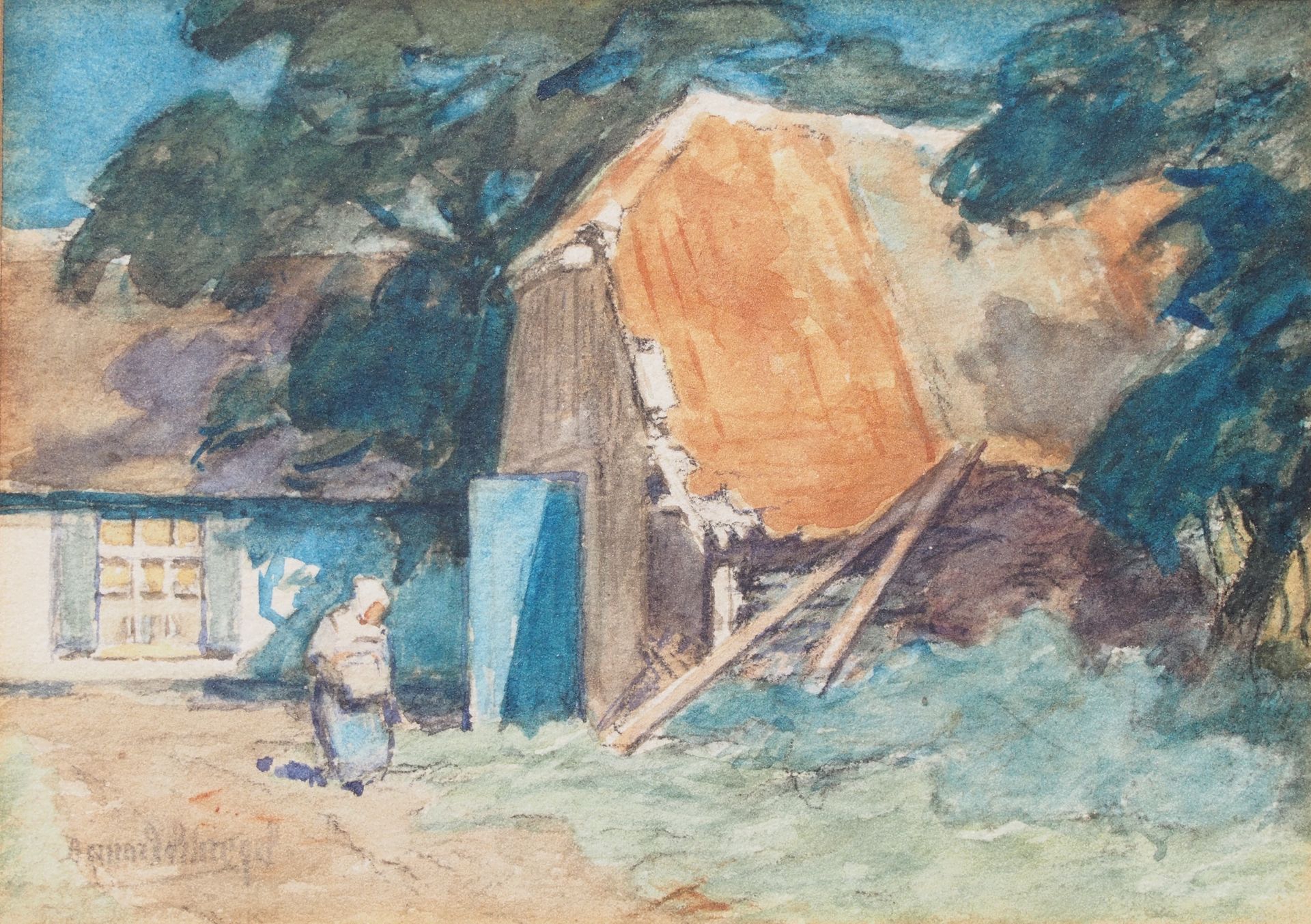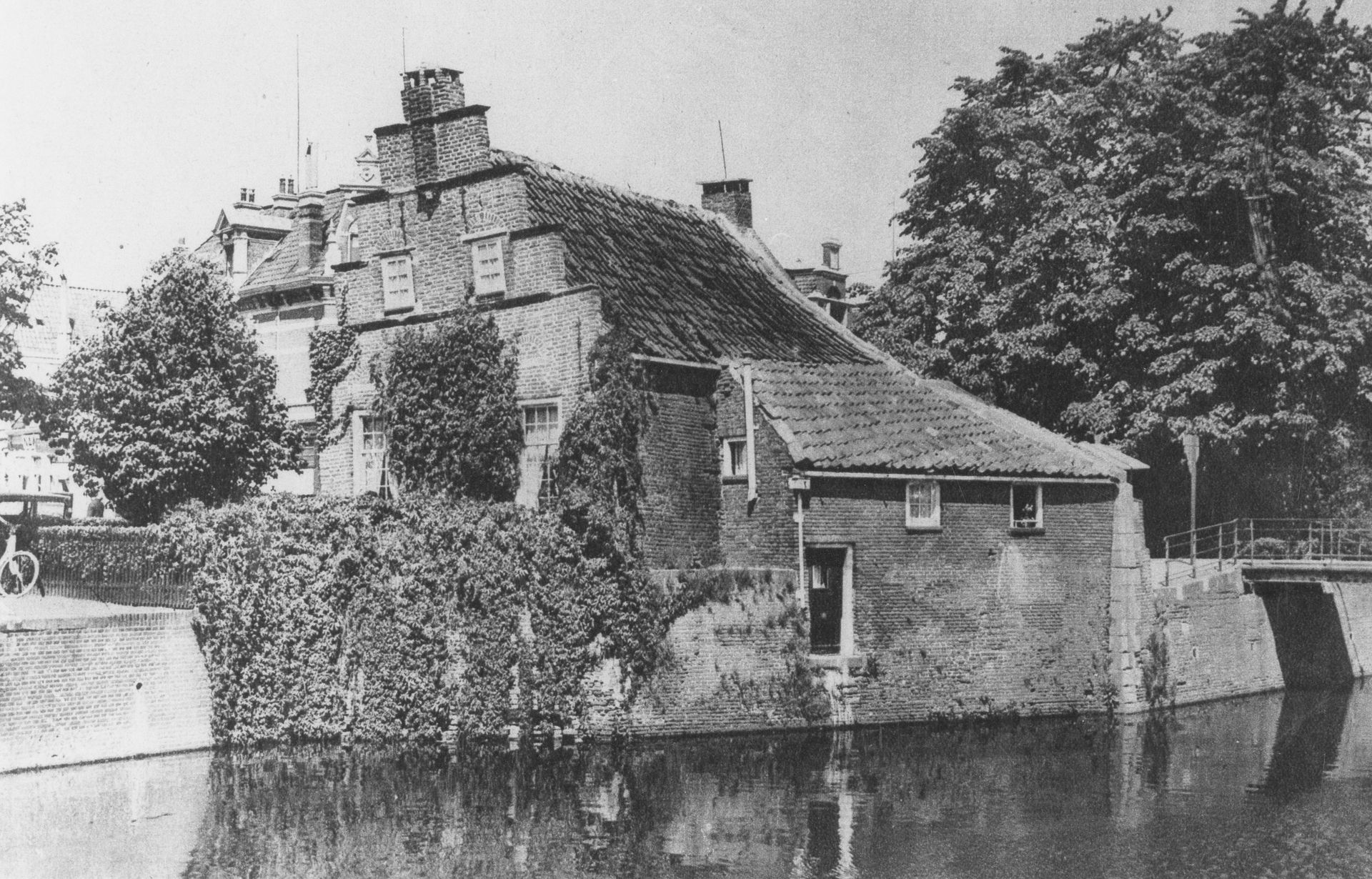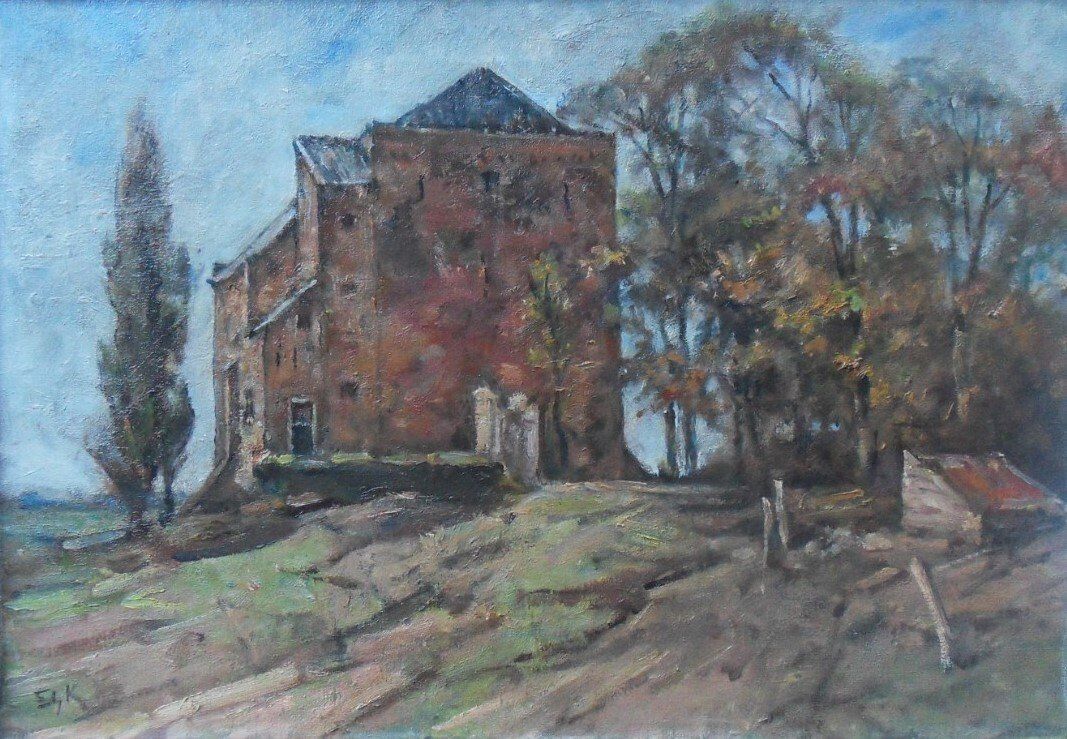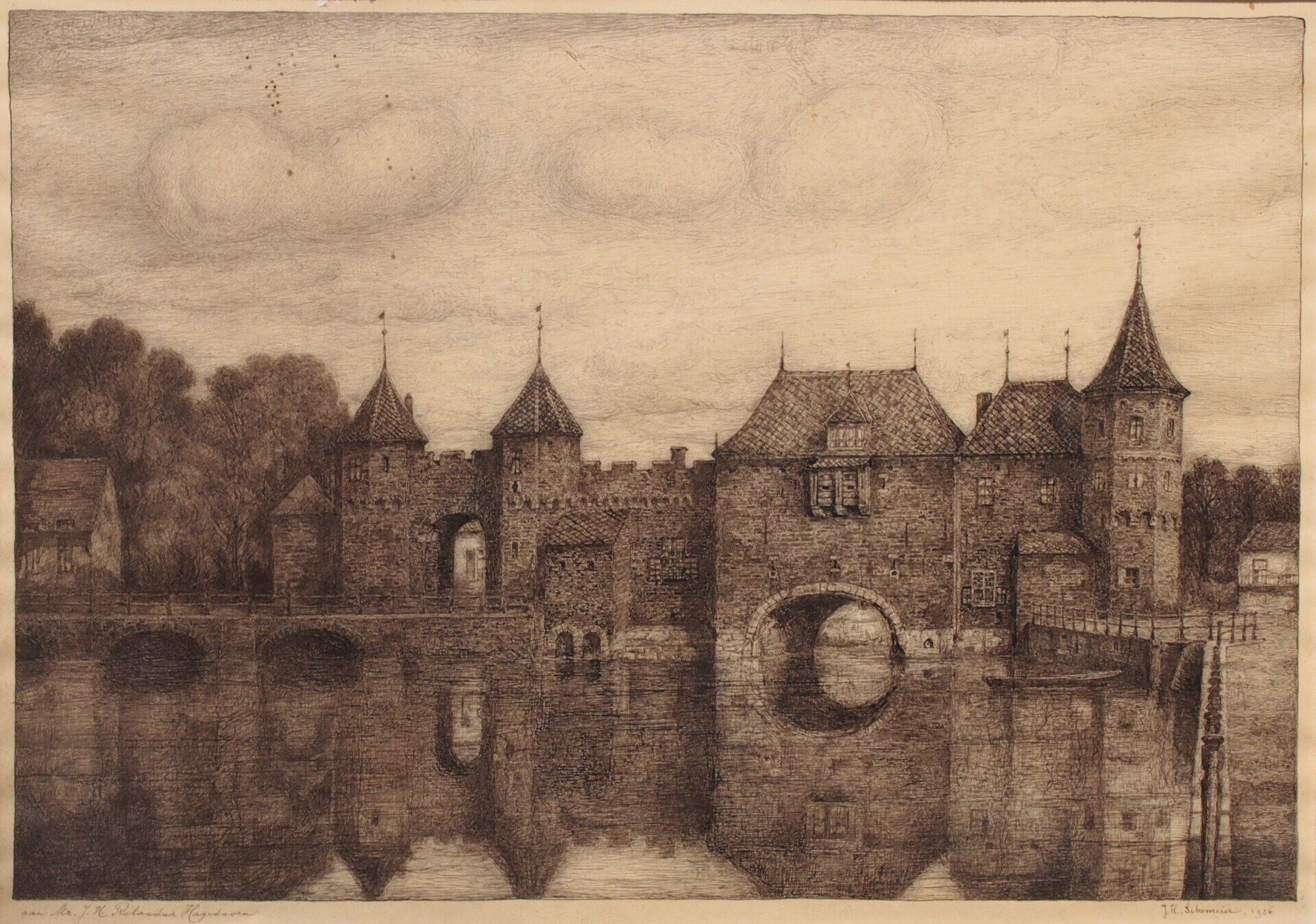Bernard Schregel: Light and Shadow of the Hague School

Introductie
Bernard Schregel, born on May 17, 1870, in The Hague and passing away on October 18, 1956, was a versatile Dutch artist. He received his education at the prestigious Academy of Fine Arts in The Hague, where he was taught by prominent figures such as Frits Jansen and the Hague impressionist Jan Vrolijk. This education was fundamental in shaping his artistic skills and vision. Here, he learned the techniques that would be central to his later works, including watercolours, etchings, and oil paintings.
His artistic career was characterized by a wide range of works, spanning from (flower) still lifes to forest and dune landscapes, and from figure and genre scenes to cityscapes. His style was marked by a delicate balance between the influence of the Hague School and his own unique approach to light, shadow, and color.
Appreciation for his work was evident in the reception of prestigious awards and his involvement in renowned art societies. He was recognized for his talent with various prizes, including the bronze Academy Medal in 1890, the silver State Medal in 1891, and the gold medal at the World Exhibition in Montevideo in 1913. Schregel was a member of several prominent art societies, such as Arti et Amicitiae and the Vereeniging Sint Lucas in Amsterdam, and in The Hague of Pulchri Studio and the Haagsche Kunstkring, establishing himself as a significant figure in the Dutch art world. Schregel not only developed into a gifted artist but also became an influential teacher, passing on his knowledge and skills to a new generation of artists, including Rudolf de Bruyn Ouboter and Etie van Rees
Work and Style
Bernard Schregel's artistic oeuvre encompasses a wide range of themes and techniques, reflected in his watercolours, etchings, paintings, and drawings. His works demonstrate his deep connection to nature and everyday life. Schregel's style was influenced by the Hague School, known for its realistic and sometimes moody portrayal of the Dutch landscape. He excelled in capturing light effects, particularly evident in his paintings of landscapes and farmhouses and estates. His work, appreciated for its technical skill and sense of composition, evolved over the years, developing his own unique expression. Schregel painted various subjects in both oil and watercolour, with the latter often so elaborated that it cannot be considered a mere study.
Schregel's etchings are less known, but he also showed great skill in this medium. He often applied multiple techniques, as the etchings are enlivened with touches of watercolour paint. Particularly noteworthy is the etching of 'the little bridge', possibly serving as a study for the oil painting with this title, but also his depiction of the sheepfold, in which an observant viewer can recognize sheep and a shepherd, captivates the imagination. The level of detail and the atmosphere created by the fine lines of ink and carefully applied colour touches are of a high standard.
Early Recognition and Development
Bernard Schregel's talent was quickly recognized through the praise he received in the late nineteenth century in the Dagblad van Zuidholland en ’s-Gravenhage. His works "Duck Hunting" and "Drinking Cow" were praised for their technical skill and natural representation, showcasing the young artist's potential. On February 11, 1895, this newspaper reports on the literary and musical art evening in favour of the Association for the Poor Care, organized by the Hague Art Club Jong Holland. This soirée took place in the cozy foyer of the Building for Arts and Sciences in The Hague (known as the K & W building, which was destroyed by fire in 1964). In addition to Bernard Schregel, artists such as Johannes Akkeringa, Louis Apol, Floris Arntzenius, Bernard Blommers, Jozef Israëls, Willem van Konijnenburg, Jacob and Willem Maris, Hendrik Willem Mesdag, and Jan Toorop kindly contributed to this charity evening by providing illustrations for the program, giving it lasting value. The illustrated programs were offered to the public by young people, and the remaining ones were subsequently exhibited and sold at the firm Goupil and Co. Schregel's illustration featured a watercolour of a polder landscape with a windmill and a fisherman, depicted here
The early works laid the foundation for his later successes. Newspaper reports about Bernard Schregel around the turn of the century reveal that he was highly esteemed as an artist, particularly for his ability to capture light effects in his landscapes and for his excellent figure studies, as seen in his watercolour of a singing acolyte. His works, such as "Potato Peelers" and the landscapes and farmsteads with powerful sun and shadow effects, were praised in reviews for their liveliness and realism. His skill in drawing animals, especially cows and poultry, is also emphasized.
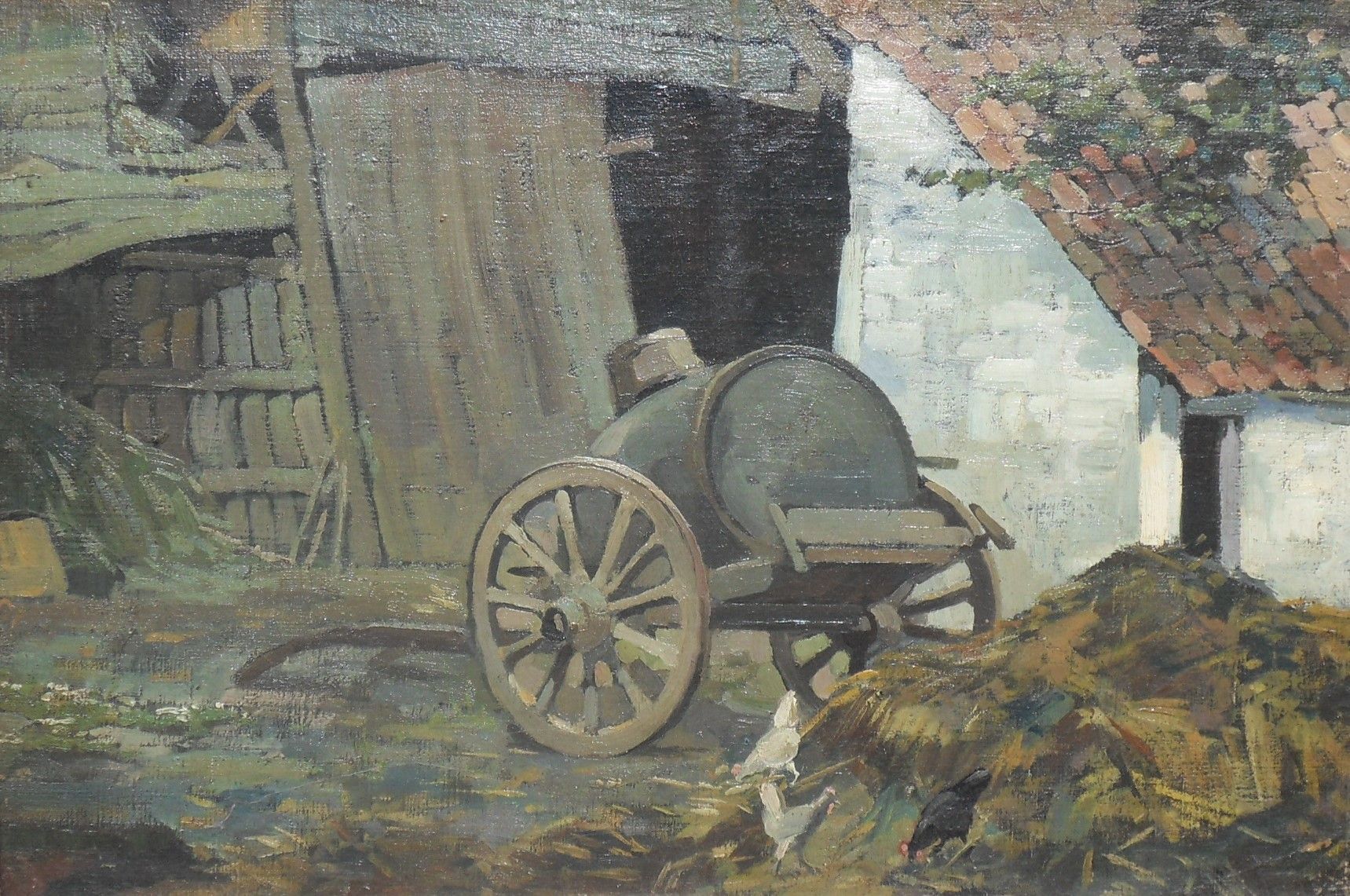
Newspaper reports about Bernard Schregel mostly reflect a positive reception of his work. The compliments are varied and include praise for his ability to capture sunlight and natural colours in his paintings.

His oil paintings "A Sunny Day," "Country House De Hanenburg," and the watercolour "Vegetable Garden" were well received. The newspaper Het Nieuws van den Dag wrote in 1905 about the work "Sunshine" that it depicts the real sun, as its glowing rays set trees, roof, and ground ablaze, with a tile roof that, despite its bright red, remains harmonious. And the magazine Land en Volk wrote a year later that all of Schregel's pieces are greatly admired and the way he lets sunlight fall through the trees onto the white walls and red roofs of the farmhouses is a delight to see.
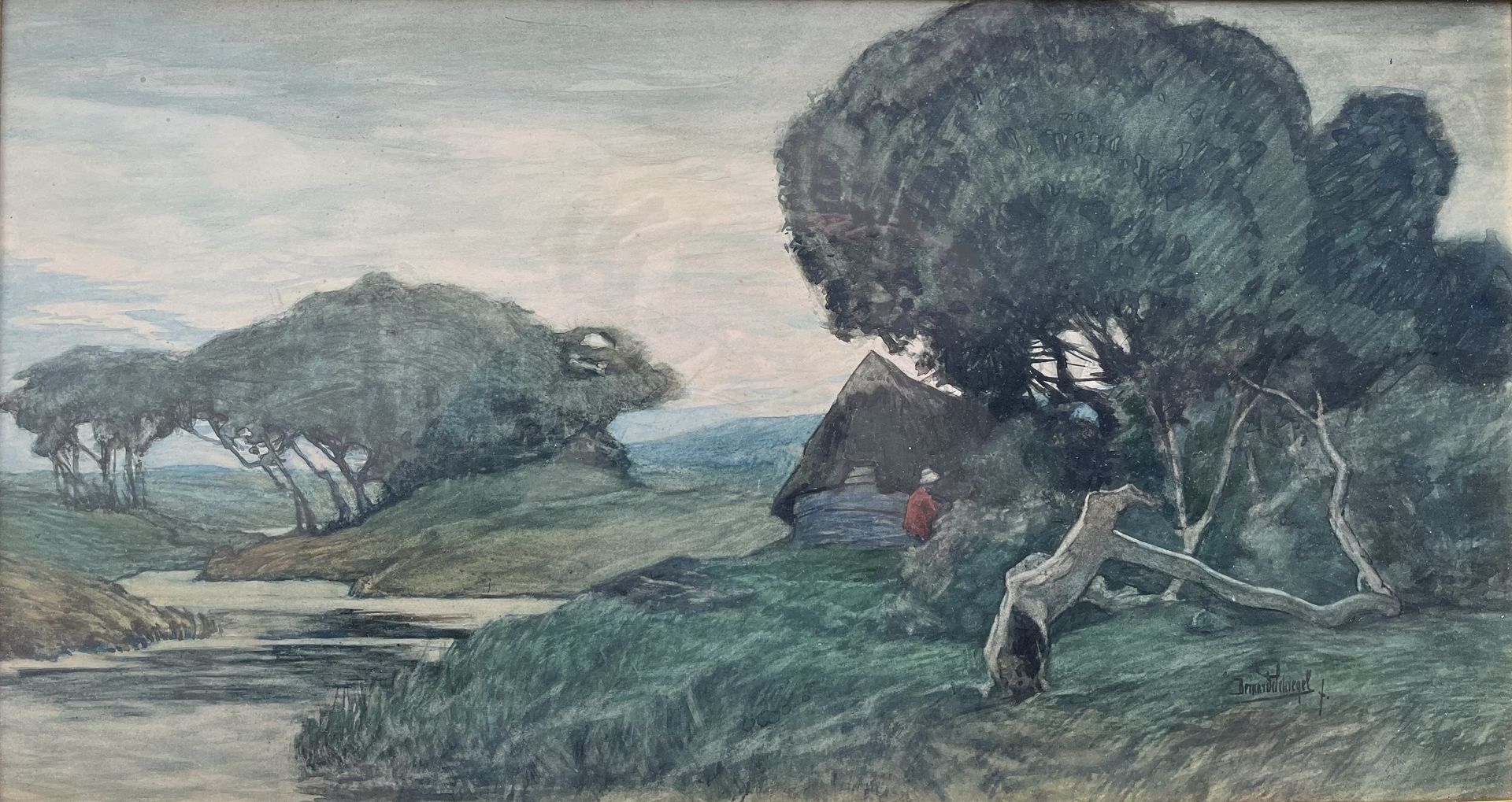
His work is appreciated for the realistic and lively depiction of landscapes, farmhouses, and figures, with special attention to details in light and shadow, as well as his talent for creating atmospheric and evocative scenes. Often, it involves a combination, figures in a landscape or working on the farm. From the watercolor mentioned above, a landscape with a stream and a sheepfold with a shepherd in a red jacket, an oil painting is also known.
Criticism, though less frequent, sometimes points to an excessive use of paint. "Painting should not become plasterwork," writes the aforementioned Dagblad. However, De Telegraaf offers a more nuanced view, praising both his sensitive use of color in smaller works and criticizing larger pieces with a grainy texture and less effective expression of light. The Algemeen Handelsblad is particularly laudatory, emphasizing Schregel's solid technique and use of color
His later career
In his later years, Schregel made a slight change in color and conception. He worked a lot in Limburg, which made his palette more colorful and added more red and greenish blue
It is in this period that the beautiful work, auctioned by AAG Auctioneers, is produced, which Cornelis Veth wrote about in 1930: 'the farmhouse, with the whitewashed wall, the flower pots in front of the windows, the clogs waiting in such a natural position on an old faded rug, laid outside, the typical blue of the wood, gives a painting, whose intimate thoroughness one looks at with pleasure'.
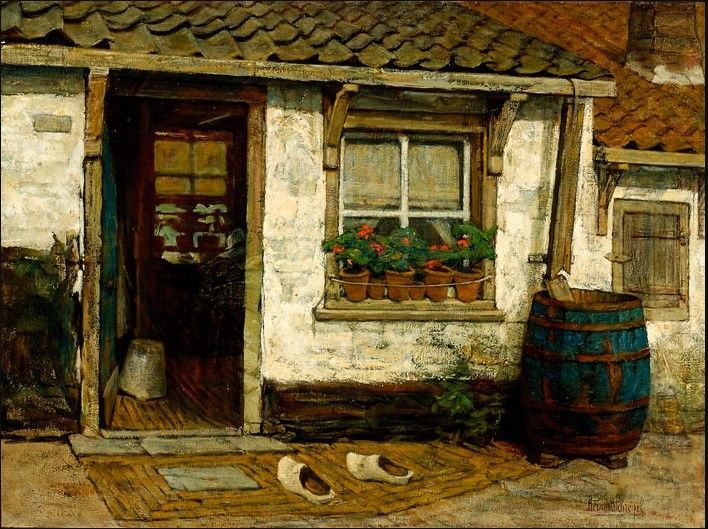
In his later career, Bernard Schregel continued to develop his artistic skills and received increasing recognition for his work. His contribution to the Dutch art world, both through his individual creations and his role as a teacher and mentor to young artists, strengthened his reputation. His works were appreciated not only nationally but also internationally, as evidenced by purchases by royal and museum collections. Schregel remained active in the artist community and held an influential position within various art societies. His membership in various artists' societies demonstrates his commitment to the art community and the recognition he received from his contemporaries.
The tribute on the occasion of his sixtieth birthday in 1930 during the opening of the Pulchri exhibition with works by ordinary members is special. The eight works by Schregel on the most prominent wall emphasized his status and appreciation in the art world. On May 20, 1940, De Residentiebode made a beautiful tribute to this artist and his works on the occasion of his 70th birthday: 'the motifs are taken from the Dekkersduinen, now a villa park, but in his younger years the hunting ground of the painting kings of the Hague School, motifs that will remain unforgettable, dune edges, with trees blown by the Westersea wind, old, dilapidated sheds, with flame-coloured, sun-drenched roofs and bluish discoloured doors in the most delightful Bremen green. It was a romance of good stock, with horizon illusions, entirely in the spirit of romance and the traditions of the Dutch landscape, and then, as always, based on conscientious observation of nature'.
Schregel's death in 1956 marked the end of a rich and influential life in art, but his legacy lives on through his works and the impact he had on his students and the art community as a whole. His contribution to Dutch art history remains of great value.
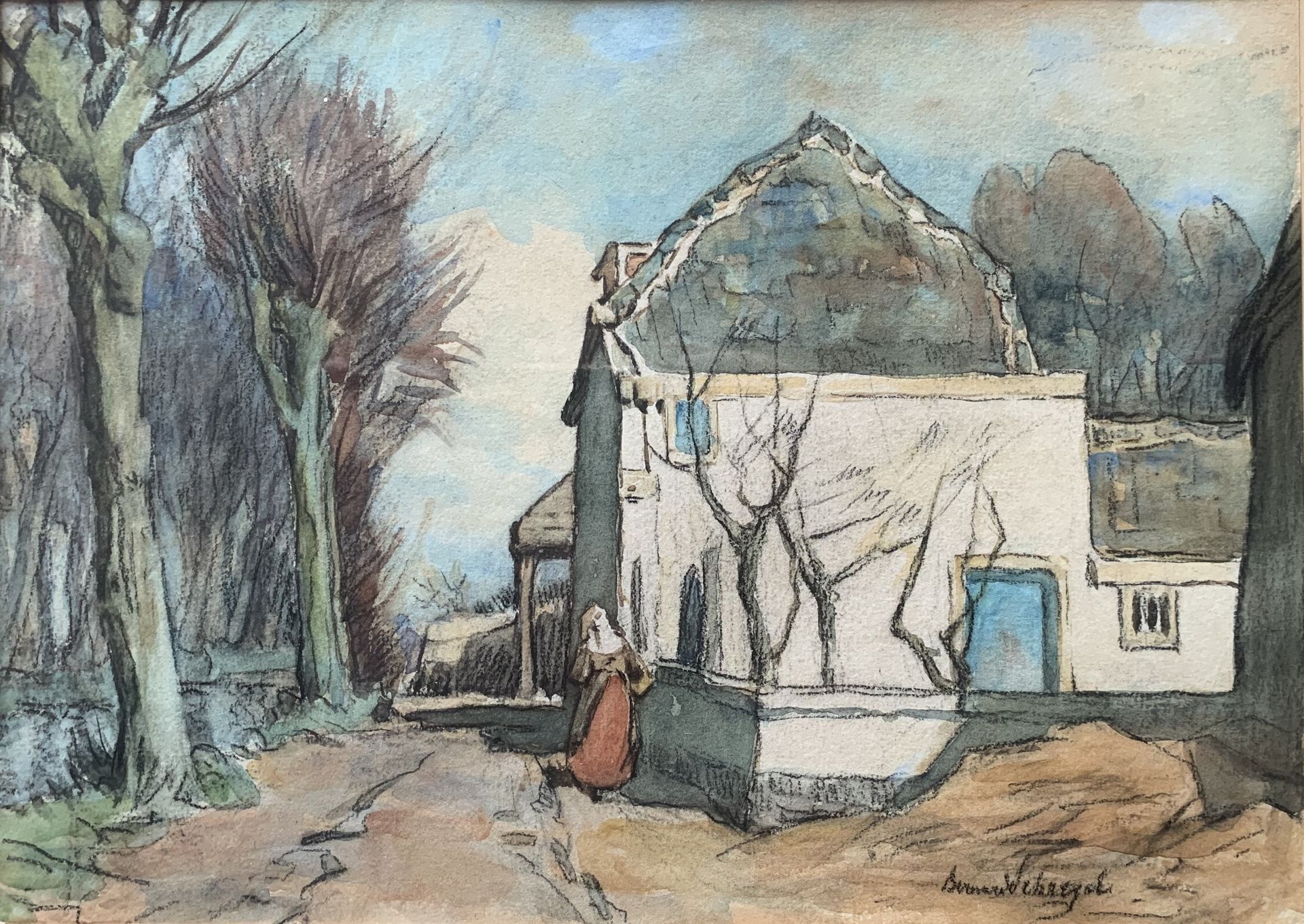
Adelwein Kunst www.adelweinkunst.nl March 2024

